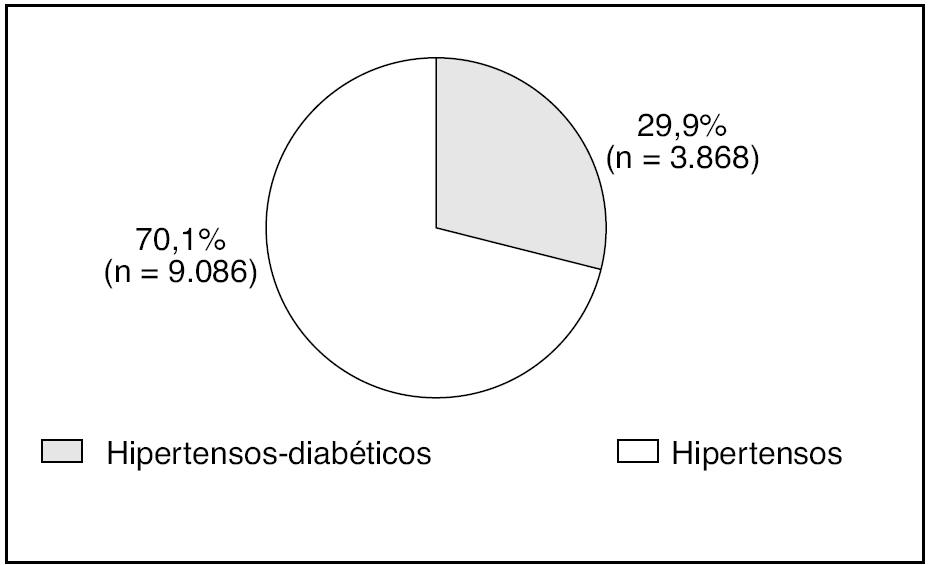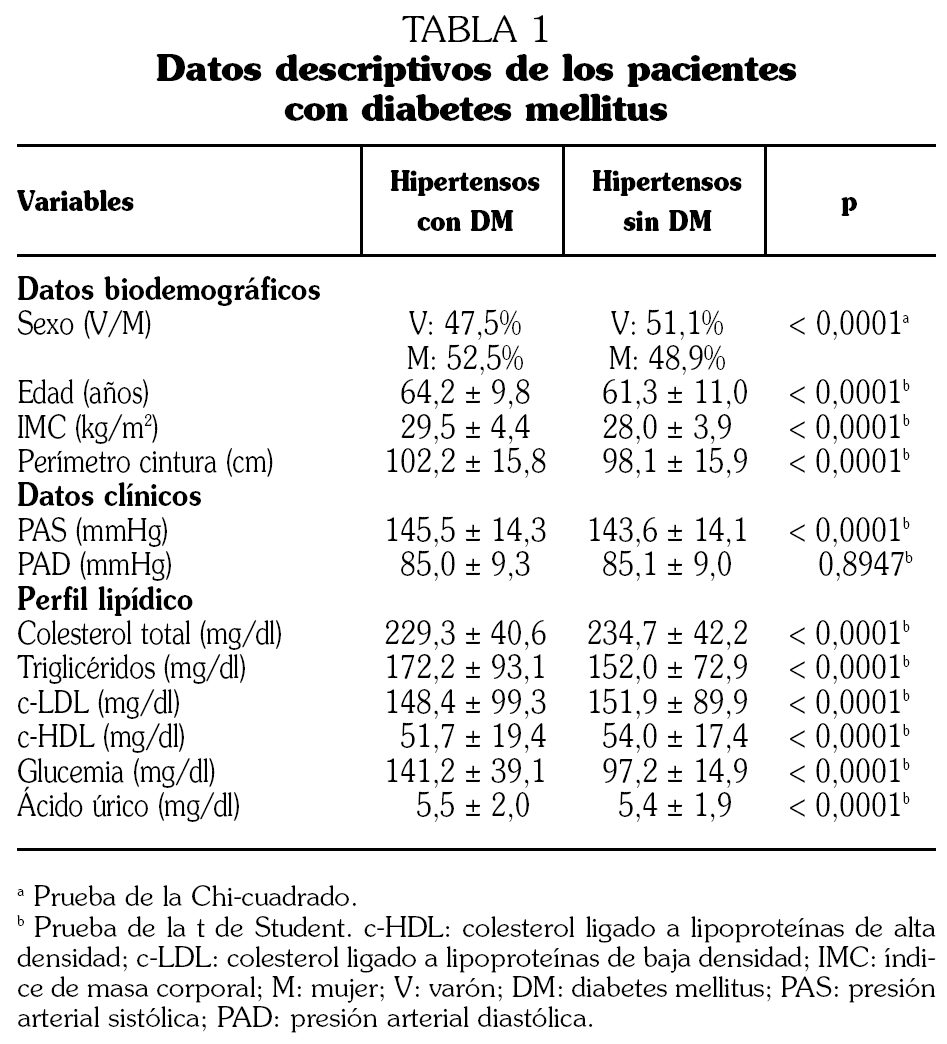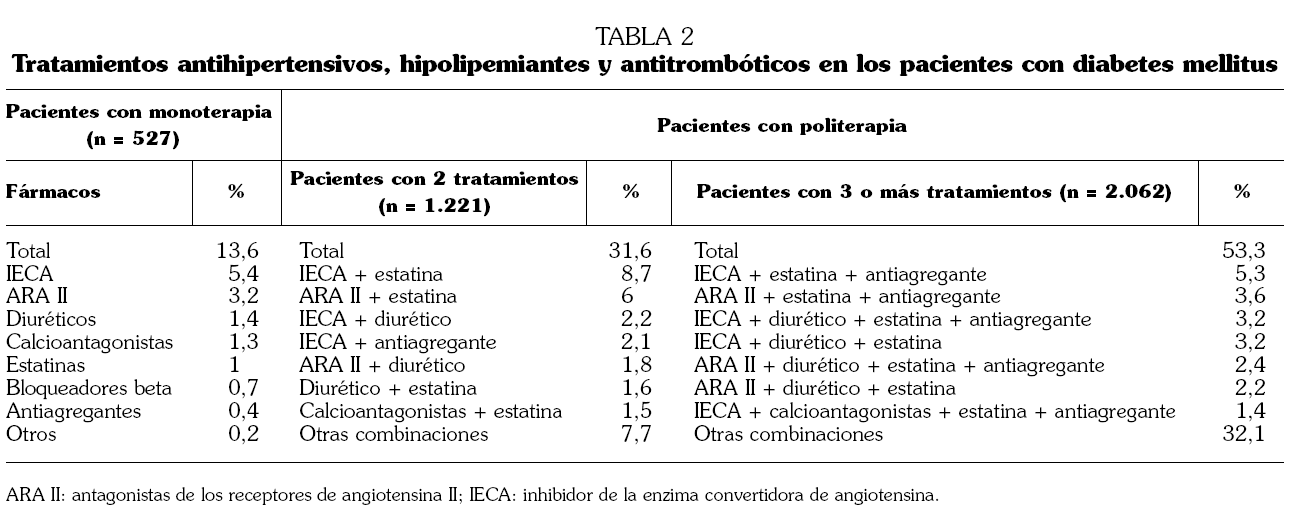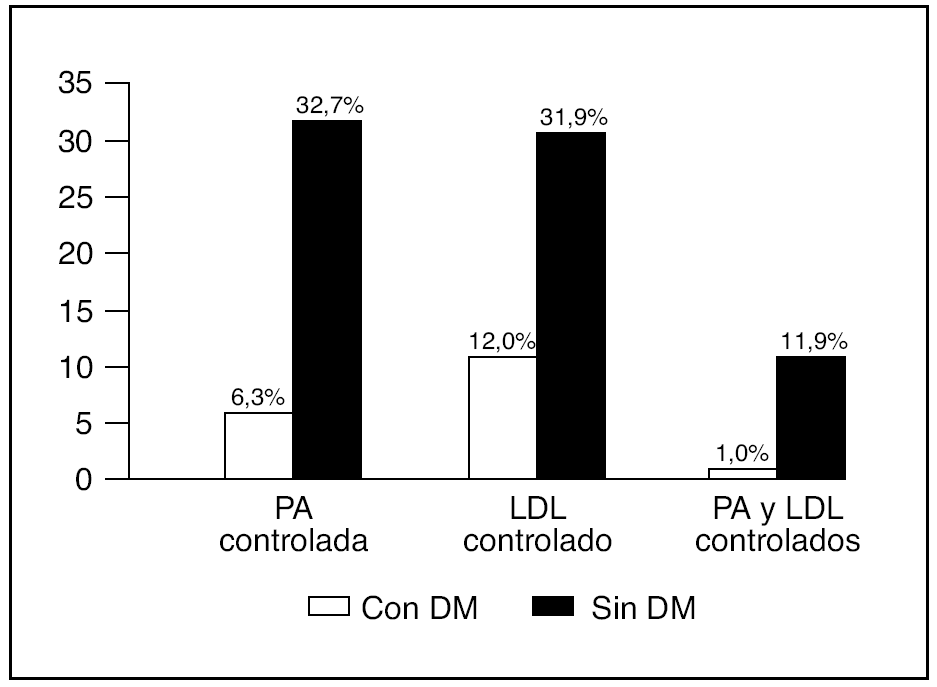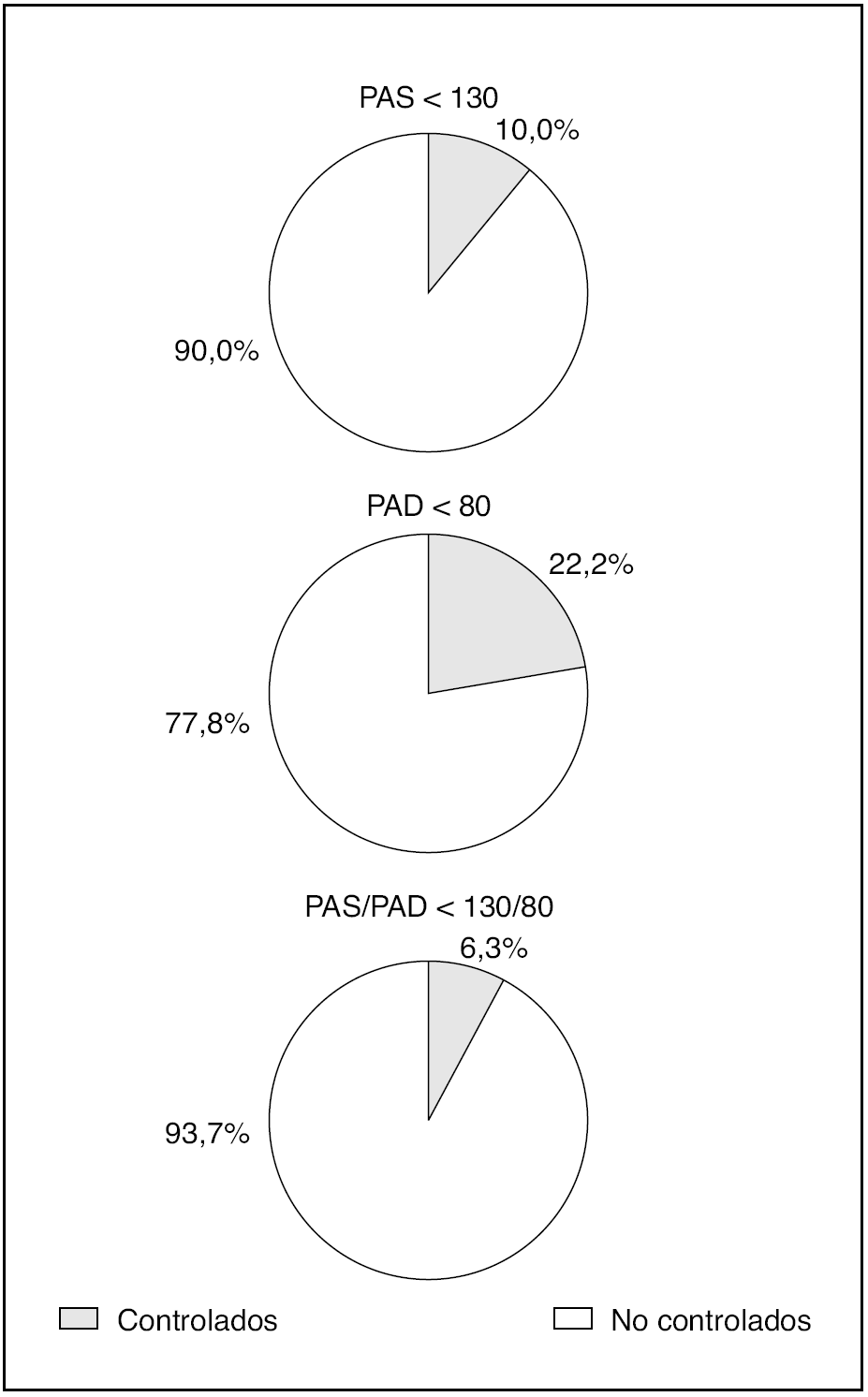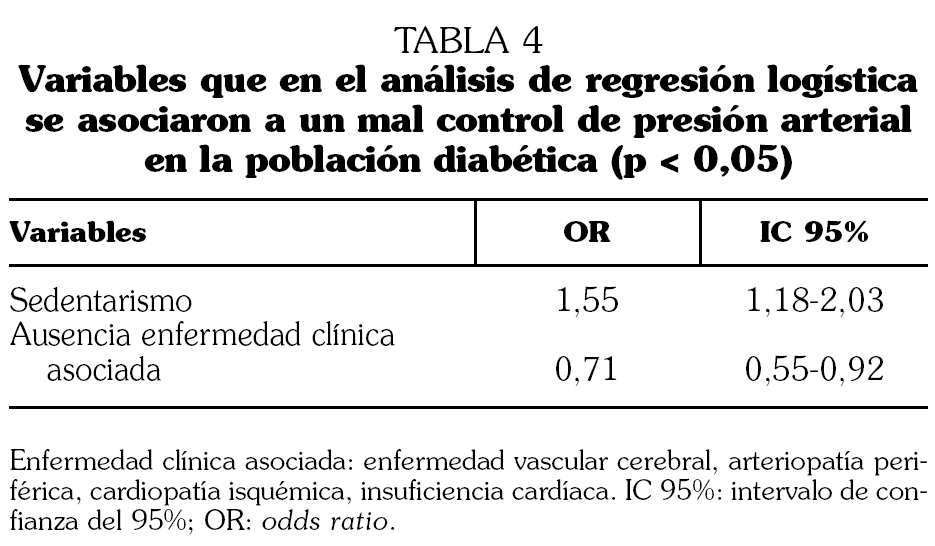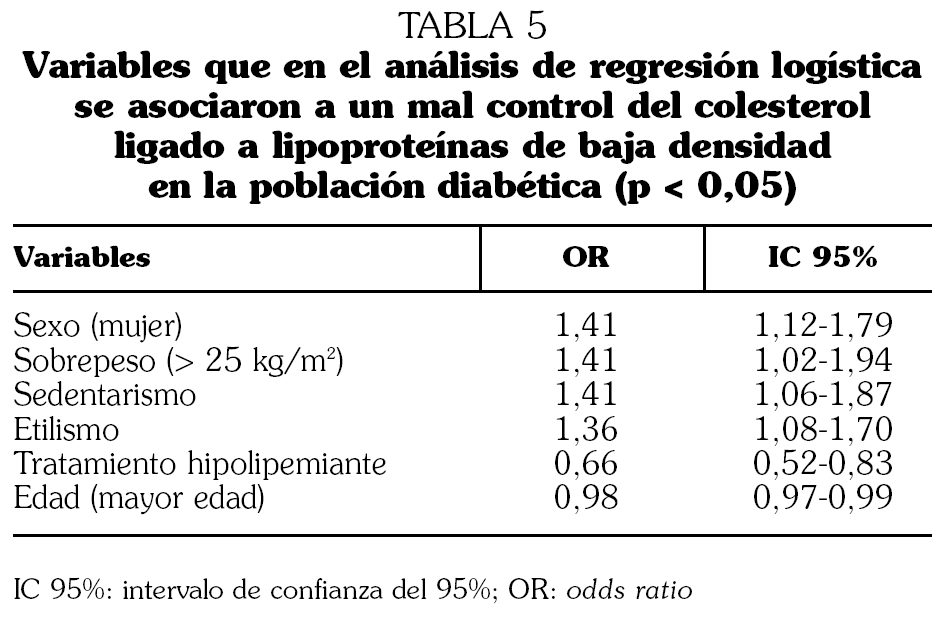Objetivos y métodos. El objetivo de este estudio ha sido conocer el grado de control de presión arterial y colesterol ligado a lipoproteínas de baja densidad (c-LDL) de los pacientes hipertensos con diabetes mellitus asistidos en Atención Primaria, y comparar los datos con la población hipertensa sin diabetes. Analizamos para ello el subgrupo de los pacientes diabéticos incluidos en el estudio PRESCOT (estudio transversal de sujetos hipertensos > 18 años asistidos en Atención Primaria). Se incluyeron 12.954 pacientes (edad 62,1 ± 10,7 años; el 49,9% mujeres). Se consideró buen control de presión arterial < 130/80 mmHg (según las guías de la European Society of Hipertensión/European Society of Cardiology [ESH-ESC]) y de c-LDL < 100 mg/dl (National Cholesterol Education Program-Adult Treatment Panel III [NCEP-ATP III]). Resultados. De los pacientes hipertensos 3.868 (29,9%) del estudio PRESCOT eran diabéticos (edad 64,2 ± 9,8 años; el 47,5% varones). El 98,5% de ellos tomaban algún fármaco además del tratamiento antidiabético y el 84,9% tomaban al menos 2 fármacos. A pesar de que los hipertensos con diabetes tomaban más antihipertensivos que aquellos sin diabetes (el 48,75% frente al 40,85% tomaban al menos dos fármacos, p < 0,001), el control de presión arterial fue peor en los diabéticos (el 6,3% frente al 32,7%, p < 0,0001). También fue peor el control de c-LDL en estos pacientes (el 12,0% frente al 31,9%, p < 0,0001). Sólo el 1,0% de los hipertensos diabéticos tenían bien controlados ambos factores de riesgo, presión arterial y c-LDL (frente al 11,9% del grupo sin diabetes, p < 0,0001). Fueron predictores de mal control tensional el sedentarismo y la presencia de enfermedad clínica asociada, y de mal control lipídico una edad menor, el sexo femenino, el sobrepeso, el etilismo y la ausencia de tratamiento hipolipemiante. Conclusiones. La presencia de diabetes mellitus en la población hipertensa atendida en Atención Primaria en España es frecuente. Uno de cada tres hipertensos que acuden diariamente a la consulta es diabético. A pesar de que en estos pacientes se prescriben más fármacos, el control de presión arterial y de c-LDL es significativamente peor que en los pacientes sin diabetes. En la clínica diaria de Atención Primaria, prácticamente ningún paciente hipertenso diabético tiene bien controladas las cifras de presión arterial y c-LDL.
Palabras clave:
hipertensión arterial, diabetes mellitus, lípidos, control, Atención Primaria
Objectives and methods. The aim of this study was to determine the blood pressure and LDL-cholesterol (LDL-c) control rates of hypertensive patients with diabetes mellitus attended in primary care setting in Spain, and to compare the data with those of the hypertensive population without diabetes. For this purpose, we analyzed the subset of diabetic patients of those included in the PRESCOT study (a cross-sectional survey of hypertensive subjects > 18 years attended in primary care). 12,954 patients (49.9% females; 62.1 ± 10.7 years) were included in the PRESCOT study. Good controls were considered blood pressure < 130/80 mmHg (according to European Society of Hypertension-European Society of Cardiology [ESH-ESC] guidelines) and LDL-c < 100 mg/dl (National Cholesterol Education Program-Adult Treatment Panel III [NCEP-ATP III]). Results. Overall, 3868 (29.9%) of PRESCOT patients were diabetics (mean age 64.2 ± 9.8 years; 47.5% males). Almost all the diabetic patients (98.5%) were taking some drug besides the antidiabetic treatment and 84.9% were taking at least 2 drugs. Although diabetic patients were treated with more antihypertensive medication than those without diabetes (48.75% vs 40.85% were on > 2 drugs, p < 0.001), blood pressure control was much lower in diabetics (6.3% vs 32.7%, p < 0.0001). In the same way, LDL-c control was also lower in these patients (12.0% vs 31.9%, p < 0.0001). Only 1.0% of diabetic hypertensives were well controlled for both risk factors (vs 11.9% of non-diabetics, p < 0.0001). Predictors of bad blood pressure control were sedentarism and presence of associated clinical conditions, and for lipid control the younger age, female gender, overweight, alcoholism and non-use of lipid-lowering agents. Conclusions. The presence of diabetes in hypertensive population attended in Spanish primary health care is frequent. One out of every three hypertensives who attend the outpatient clinic daily is diabetic. Even though more drugs are prescribed in these patients, blood pressure and LDL-c control rates are significantly lower than in patients without diabetes. In the daily practice of primary care setting, almost no diabetic hypertensive subject is well controlled for blood pressure and LDL-c.
Keywords:
hypertension, diabetes mellitus, lipids, control, Primary Health Care





